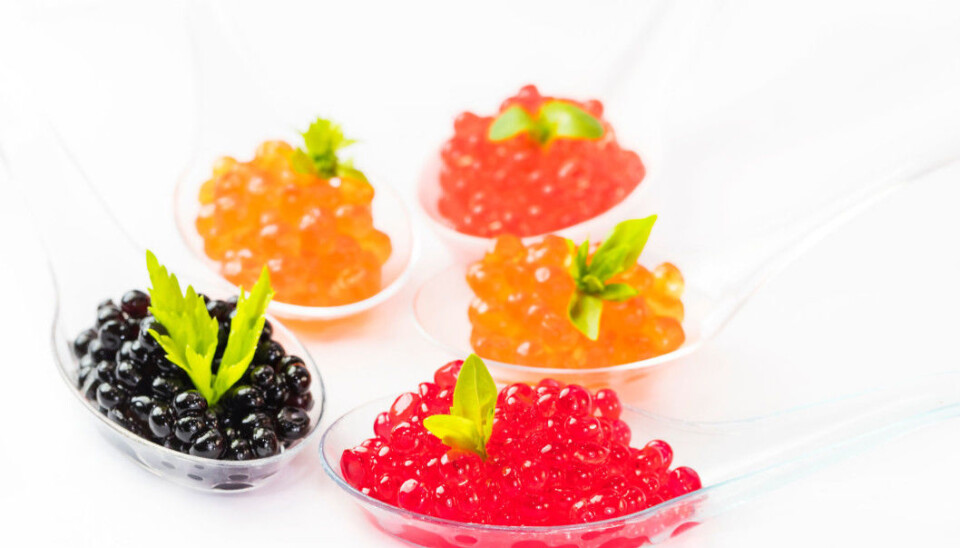
How to make your own luxury caviar
If you are lucky enough to catch a salmon that is full of roe, you must never throw the roe away!
This year I went on holiday to Finnmark, to a popular salmon fishing spot. Midnight sun, breathtaking scenery, bonfires, barbecues, and with a little patience, there’s the possibility of catching a salmon of up to 20 kilos.
Every year, tourist anglers from several countries arrive to experience unique Finnmark and try their luck at fishing. It is understandable that these tourists focus mainly on the fishing experience. The excitement and enthusiasm one has when one gets a salmon on the hook can’t be compared with anything else! As a reward, the fish tastes absolutely fantastic.
Use the whole salmon!
But what do you do when you catch a salmon? Does the whole salmon get used? The salmon industry invests a lot of money in avoiding raw material waste, and producers do everything they can to utilize raw material in the best possible manner. And for me, who has studied and worked in fish processing for several years before becoming a scientist, it is extremely important to use the whole fish when making dinner. That’s right, in our house, if there’s fish for dinner, it’s got bones in it. As my grandmother once said: “All the taste is in the bones!”
Wouldn’t it be a good thing then, to utilize the most of wild salmon in the best possible way? For example, if you only eat the fillet, all the other bits can be used to make a great fish soup. And if you’re lucky enough to catch a salmon that is full of roe, you can make luxury food that is unbelievably tasty and healthy at the same time –caviar.

Very nutritious
Caviar is a unique, high valuable and nutritious product. The most popular and expensive caviar products are made from roe that comes from sturgeons and salmonids.
As a rule, roe contains more protein and less water compared to the muscle from the same fish. For example, roe from salmonids and sturgeons contains about 27% protein (can be up to 35%), and the proportion of water is 50-70%. In comparison, fish muscle contains about 20% protein and 65-80% water.
In addition, roe from sturgeons and salmonids contains a lot of fat, up to 18%. Roe contains all of the essential amino acids (those that our body cannot make itself and we must therefore get through food), polyunsaturated fatty acids (healthy fats), minerals and vitamins (A, B12, B1, B2, B6, C, D, E).
Different species have different roe
Roe from different species of fish is different in structure, shape, size, chemical composition, nutritional value and sensory characteristics (taste, colour, etc.). Fish roe is actually fish eggs. They look like grains filled with liquid. These roe grains are wrapped in a pair of roe sacks that lie symmetrically along the spine in the abdominal cavity of the fish. Sturgeons have roe sacks consisting of several interconnected lobes (flaps), similar to herring, while salmonids roe sacks are whole and have a smooth surface. Immature roe grains are more firmly and are packed quite tightly in the roe sack, while mature roe grains can be easily separated from the roe sack’s membrane. This is an important factor when determining the type of caviar product to be made.
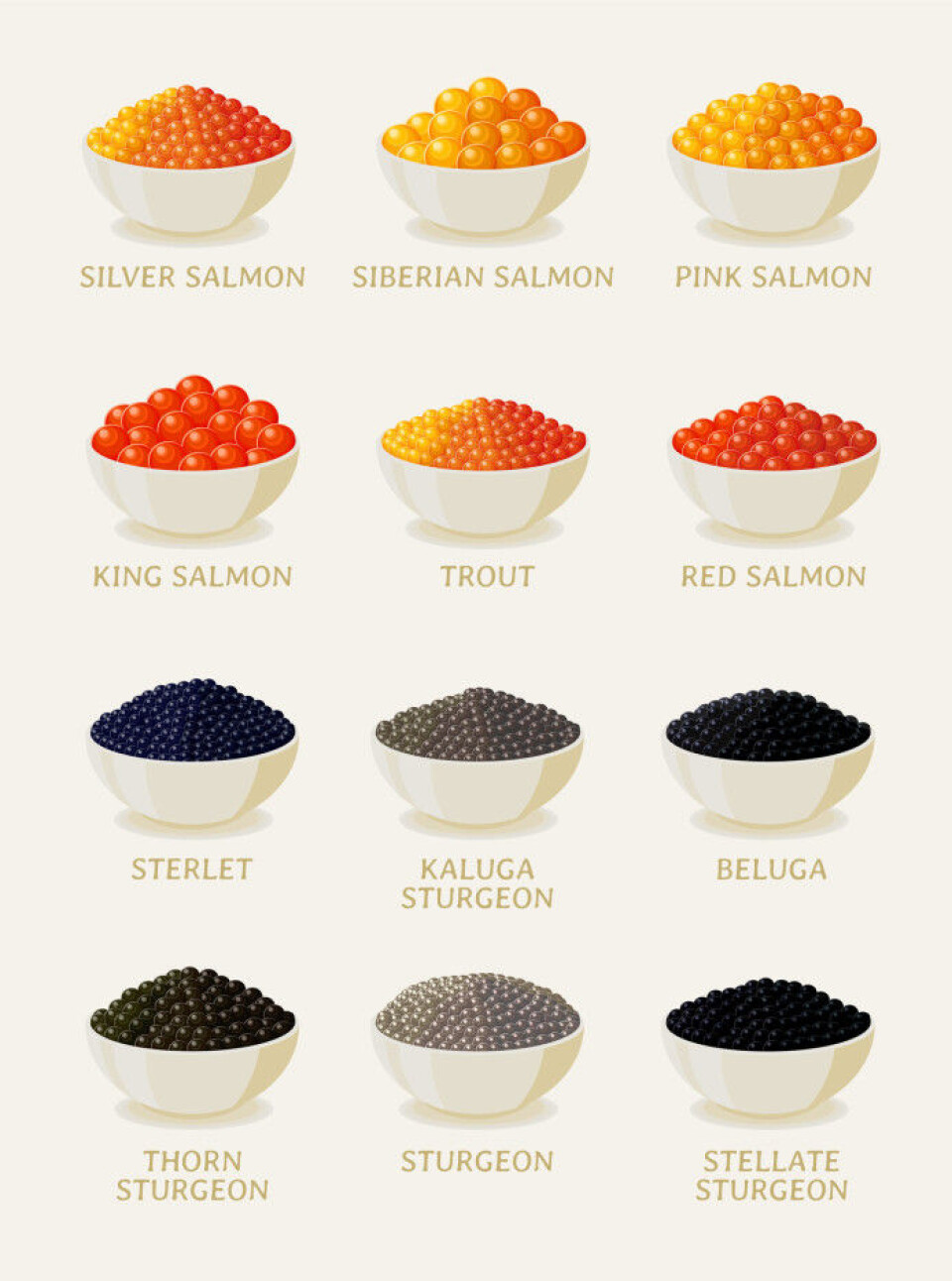
Black caviar
Black caviar is made from the roe produced by fish in the sturgeon family. These include the beluga sturgeon, kaluga sturgeon, Russian sturgeon, Siberian sturgeon, Persian sturgeon, Amur or Japanese sturgeon, stellate sturgeon, the sterlet and ship sturgeon. The colour of sturgeon roe varies from light grey to black, and each egg is oval in shape.
The colour of sturgeon roe is an important parameter when it comes to quality, and the roe grains are sorted into the colours of light grey, grey, dark grey and black during production. Caviar that is light grey in colour and has large roe grains is considered to be the most valuable caviar. Light grey beluga caviar as well as sturgeon caviar that is pale yellow to yellowish grey in colour, so-called tsrskaja caviar, fetch the highest prices. Roe of this colour is often found in albino fish. You can consider yourself lucky if you’ve tasted tsrskaya caviar.
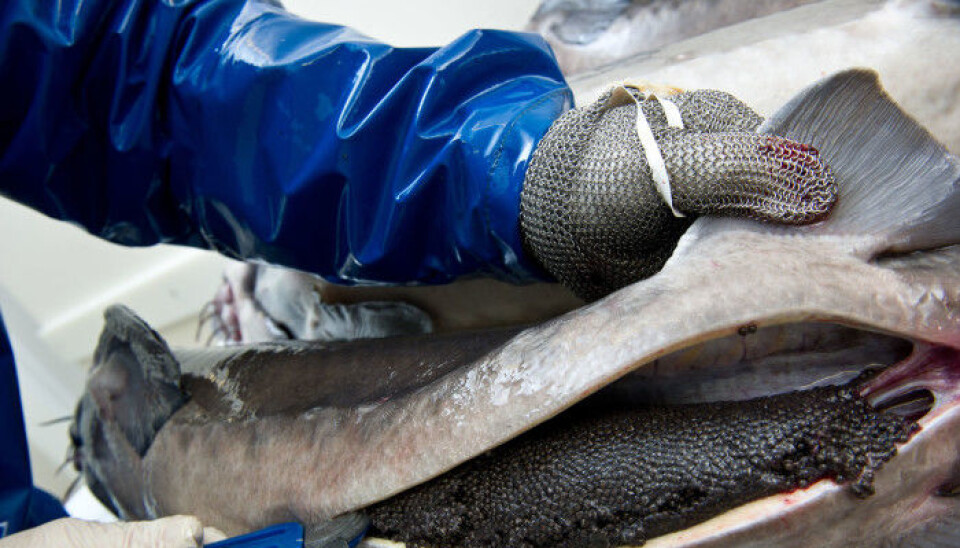
Red caviar
Caviar from salmonids often comes from pink salmon, coho salmon, rainbow trout, red salmon, chum salmon and Chinook salmon. Salmon roe varies in colour from bright orange to dark red, which is why it is often called red caviar. In contrast to sturgeons, salmon roe is not sorted according to colour. This is because the colour of the roe remains almost unchanged within the same species.
However, different types of salmon have slightly different roe. Pink salmon roe has an intense orange colour, each grain is 4 to 4.5 mm in diameter and they have a very thin eggshell that splits easily. It has a traditional flavour but is slightly bitter. In comparison, coho salmon roe is dark red in colour and each grain is 3 to 4 mm in diameter. They have thick eggshells and the roe tastes more bitter.
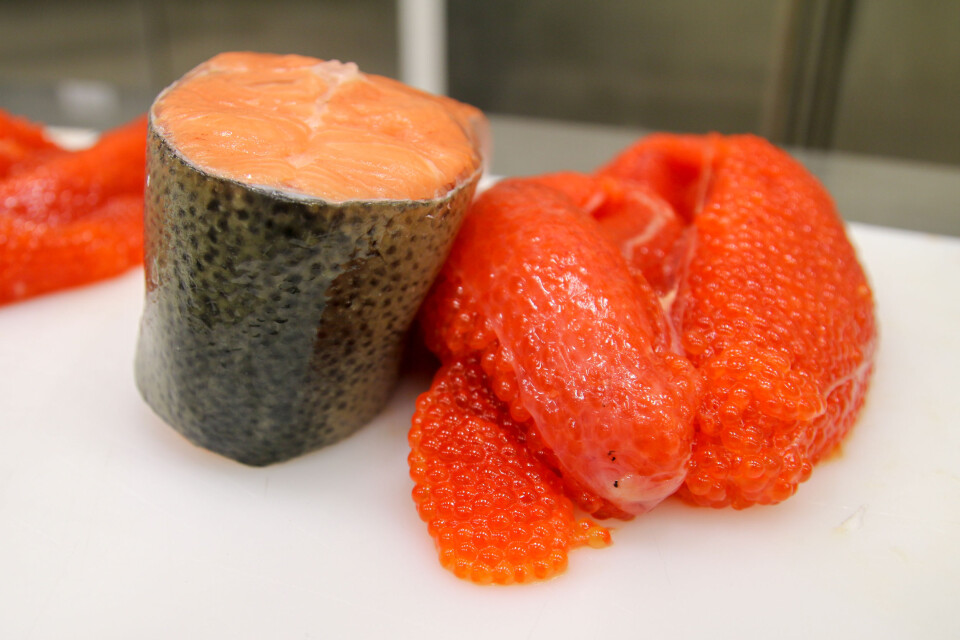
Red caviar is the easiest to get hold of, and personally, I think that it tastes heavenly. Therefore, when I’m lucky enough to get my hands on some salmon roe, I usually make caviar at home. Red caviar can be a great addition on pancakes with sour cream, on a slice of bread, as a sushi topping, as garnish on an starter and in lots of other dishes.
So, how do you make such a delicacy yourself? Well, I thought I might share it with you.
1. Get off to a quick start
The most important thing is to start making your caviar as quickly as possible, and keep the roe cold. Remember that fresh roe is a perishable product and can be quickly destroyed by both the decomposition process and by bacteria. If the roe sacks remain in the fish body after its death, the quality of the roe will deteriorate even faster (due to bacteria from other internal organs), and in just a few hours it becomes unsuitable for caviar production. In addition, the quality of fish roe reduces extreme quickly if the roe is left at room temperature. This leads to weakened roe grain membrane that can spilt easily. Roe that is stored at low temperatures keeps longer, but roe grain membrane can still become weak after just one day, making the production process more difficult.
Roe can only keep for about 2 hours at temperatures up to +15 °C, but if stored on ice, it can keep for up to eight hours after the fish has been caught. After one to one and a half days, the roe will turn into a semi-liquid mass that begins to smell sour or even rotten. One should try to avoid this. Therefore, the fish should be bled and gutted as soon as possible after it has been caught and the roe should always be kept cold, as close to 0 °C as possible. As soon as you can, the roe should be separated from the roe sacks. Roe that remains in the roe sacks doesn’t keep long due to the fact that the blood and mucus they contain is a favourable environment for bacterial growth.
2. Make a brine

Start by making a brine. The amount of brine depends on how much roe needs to be salted, about 1 part roe to 2-3 parts brine. For one litre of brine you need approximately 110 g of sea salt and approximately 2-3 tablespoons of sugar. Add this to one litre of water, bring the brine to a boil and let it simmer for approximately 10-15 min. Cool it down to room temperature.
3. Clean the roe
While the brine simmers, clean the roe. For this you need 3 to 4 litres of boiled water, which you let stand for a while. The water is needed to clean the roe before salting. The water should be quite warm, but not so hot that you can’t keep your hands in the water. Add 1 to 2 tablespoons of salt (without iodine) and then stir. Place the roe in the water and leave it for 3 to 5 minutes before separating the roe from the roe sack membrane, any blood residue and mucus. The hot water makes this easier. This is the hardest part of making caviar, and the part that takes the longest time. You can also use a tablespoon to scrape the roe from the membrane if you find it difficult to clean the roe with your bare hands. If you’re lucky, the roe is mature, which means that the roe grains are rather loose already and you don’t have to spend a lot of time cleaning it. Rinse the grains of roe in cold water and then let them drain.
4. Salting
Place the clean roe in the brine and leave it for 10 to 15 minutes, depending on how salty you want your caviar to be. You can keep having a taste during the salting process to get it just right. The longer the roe remains in the brine, the saltier it will be. When you are satisfied with the taste, pour away the brine and rinse the caviar with cold, fresh water to remove excess brine.
5. Drying
Place the salted roe on a thick layer of kitchen roll to remove excess water. Wait until the kitchen roll has absorbed most of the water.
6. Put the caviar in glass jars
Before putting it into the jars, rinse the jars with clean brine. Portion out the caviar into the prepared jars. Add a little oil (olive oil, corn oil or sunflower oil) to prevent the grains from sticking together, and to give the caviar a more attractive appearance. If you want, you can also add dill for extra flavour. Stir gently. Screw the lid on and put the jar in the fridge. After just a couple of hours the caviar is ready to taste.
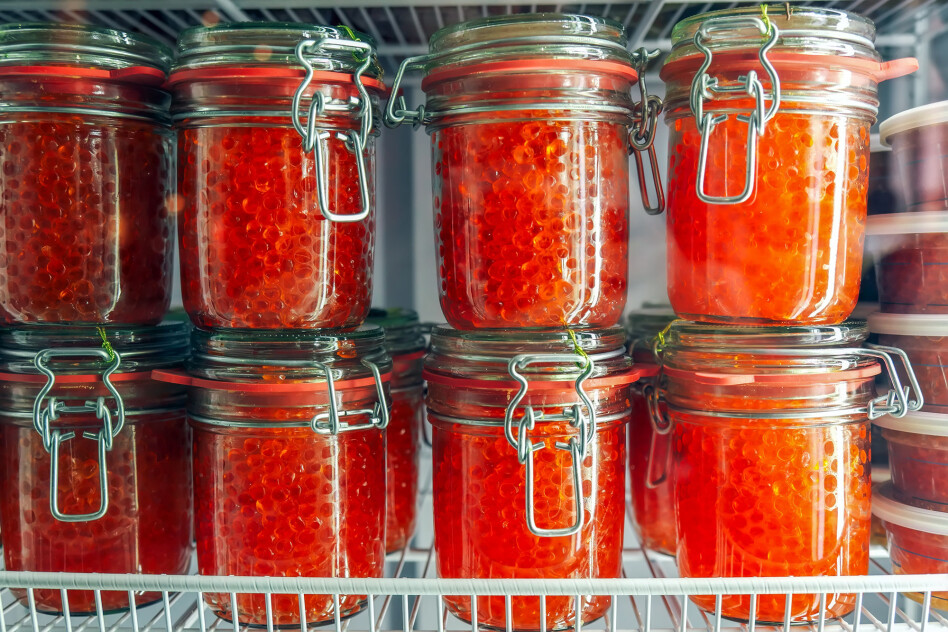
Caviar must be stored in airtight jars in a fridge (0 to 4 °C). Since it is a product that has a low salt concentration and no other preservatives, it shouldn’t be left in the fridge for too long. In my experience, it keeps for up to 1 week at most. If you notice that the colour of the caviar begins to turn cloudy, or that it smells sour and tastes bitter, you should avoid eating it.
Can you freeze caviar?
There are arguments for and against freezing caviar. In my experience, roe shouldn’t be frozen at home, as normal freezers don’t quite do the job. Quite a few of the roe grains membrane are ruined when frozen, and the roe loses a lot of fluid and flavour when thawed.
If you choose to freeze your caviar, you should use kitchen roll to remove excess fluid before eating it, but be prepared that the flavour won’t be as rich.
If you have any comments, don’t hesitate to share your experience with me.
Bon appétit!







